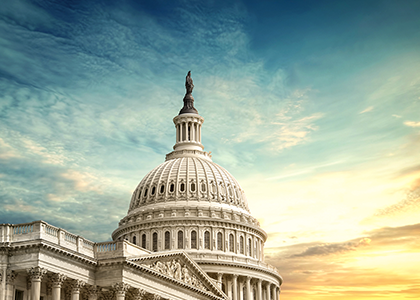Jessica Bost, COO, Wealth Advisor
Late last night, the House finally struck a deal on a $2-trillion stimulus package, titled “The Relief for Workers Affected by Coronavirus Act.” Not only is it the largest relief package in our nation’s history, dwarfing the $800-billion bill passed in response to the 2008 financial crisis, but also – for additional perspective – adds up to several hundred billion dollars greater than a typical single-year budget for the US government.
The current assemblage of resources is designed to sustain both workers and businesses that have lost income as a result of the widespread quarantine in response to the coronavirus pandemic – providing hard dollars to both large and small companies that have lost their customer base, and also cash payments to low- and middle-income families. For businesses struggling to keep employees on the payroll while doors are closed and/or demand is low, the March 2020 stimulus bill provides measures to help both the employers stay afloat and give assistance to the workers who have been laid off or cut back.
Based on a report published by the Committee on Finance, here’s what we can expect to see when the ink is dry:
- $250-billion set aside for direct payments to individuals and families
- Individuals earning <$75k = $1200 direct payment (Payment phased out at $99k)
- Married couples earning <$150k = $2400 direct payment (Payment phased out at $198k for couples without children)
- Additional $500 per child
- Available even if previous income was zero and/or SSI only
- No action required by individuals (2019 tax return used to determine income)
- $350-billion in small business loans
- SBA can serve as guarantor for loans up to $10-bil
- $250-billion in unemployment insurance benefits
- Temporary “Pandemic Unemployment Assistance” program through Dec 31, 2020
- Additional $600/week extended for up to four months
- Made available to self-employed individuals, independent contractors, those with limited work history and others not traditionally eligible for unemployment benefits
- $500-billion in loans for distressed companies
- Also several tax relief measures that are both retroactive and proactive, to provide critical cash flow and liquidity during COVID-19 emergency
- $130-billion for hard-hit hospitals
- Immediate write-offs for improvements to facilities (vs. depreciation)
- $150-billion for cash-strapped state and local governments
- Provides reimbursement to pay unemployment benefits
- Fast-track for processing unemployment and temp hires
- Optional coverage to eliminate 7-day waiting period for unemployment benefits
- Special Rules for Retirement Funds – Speak with your advisor regarding specifics on what is considered a “coronavirus-related distribution” (to ensure you qualify for the options below)
- 10% Early Withdrawal Penalty waived for distributions up to $100k from Qualified Retirement Accounts; Income received will be taxed over 3 years; Recontribution of withdrawn funds allowed up to amount taken
- Expanded loan flexibility from certain retirement plans
- Temporary waiver of RMD’s
- Special Rules for Charitable Contributions
- Above-the-Line cash contribution of up to $300 (does not have to be itemized)
- AGI Limitation suspended for individuals and increased for corporations
- Speak with your tax preparer regarding specifics
As with any new bill, and especially with one of this magnitude, we can surely anticipate further announcements surrounding the specifics of how these measures will be enacted. If you have any questions regarding the effects of this bill on your retirement accounts, please reach out to one of us to schedule a review of your financial plan.


